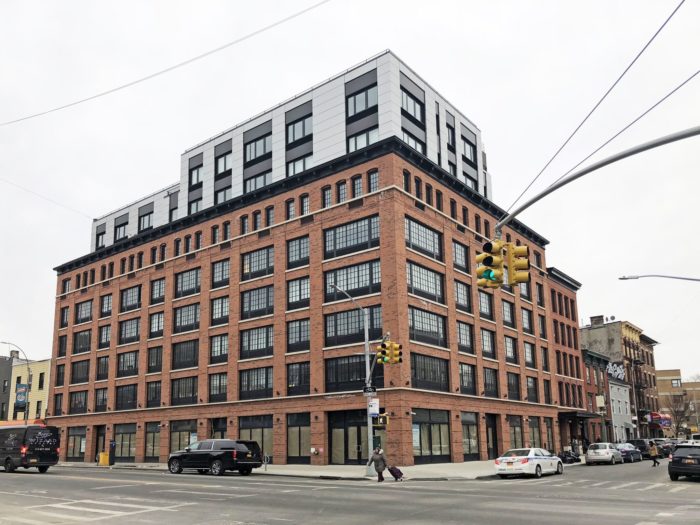
New York City’s real estate market is a dynamic, ever-evolving landscape, and property management is at the heart of keeping it thriving. As we move through 2025, property managers in NYC are adapting to new technologies, shifting tenant expectations, and a growing emphasis on sustainability. From the bustling streets of Manhattan to the diverse neighborhoods of Brooklyn and Queens, companies like BJD Management are navigating these changes to deliver exceptional service to property owners and tenants alike. In this article, we’ll explore the top trends shaping property management in New York City, offering insights for landlords, investors, and renters looking to stay ahead in this competitive market.
The Rise of PropTech in NYC Property Management
One of the most transformative trends in property management today is the adoption of property technology, or PropTech. In a city as fast-paced as New York, where time is money, PropTech is revolutionizing how properties are managed. Tools like automated rent collection systems, maintenance request platforms, and tenant communication apps are becoming standard. These innovations streamline operations, reduce human error, and enhance the tenant experience—key priorities for property managers in 2025.
For example, companies like BJD Management, which operates across Brooklyn, Queens, and Manhattan, are leveraging PropTech to stay proactive. By using software to track rental surveys and analyze neighborhood trends, they ensure properties are priced competitively in NYC’s diverse rental market. This data-driven approach helps maximize returns for property owners while keeping tenants satisfied with fair pricing.
PropTech also includes smart home integrations, such as keyless entry systems and smart thermostats, which are increasingly popular in NYC rentals. Tenants in high-rise condos in Manhattan or brownstones in Brooklyn now expect these conveniences, and property managers are responding by upgrading buildings to meet demand. Virtual tours, powered by 3D imaging and virtual reality, are another PropTech trend gaining traction. In a city where in-person viewings can be logistically challenging, these tools allow prospective tenants to explore properties remotely, saving time for both parties.

Why PropTech Matters for NYC Property Management
- Efficiency: Automation reduces administrative burdens, allowing managers to focus on strategic priorities.
- Tenant Satisfaction: Real-time communication and smart features improve the living experience.
- Competitive Edge: Properties with advanced technology stand out in NYC’s crowded market.
As PropTech continues to evolve, it’s clear that property managers who embrace these tools will lead the pack in 2025 and beyond.
Sustainability: A Green Revolution in Property Management
Sustainability is no longer a buzzword—it’s a necessity in New York City’s property management sector. With climate change concerns mounting and NYC’s ambitious environmental goals, such as reducing carbon emissions under Local Law 97, property managers are prioritizing eco-friendly practices. This trend is reshaping how buildings are maintained and marketed, appealing to environmentally conscious tenants and investors alike.
Energy-efficient upgrades, like LED lighting and high-efficiency HVAC systems, are becoming standard in NYC properties. Property management firms are also exploring renewable energy options, such as solar panels, where feasible. These upgrades not only lower utility costs but also boost property values—a win-win for owners and managers. BJD Management, for instance, emphasizes regular property inspections to ensure buildings remain in top condition, which aligns with sustainability goals by catching energy-wasting issues early.
Green certifications, like LEED or Energy Star, are another growing trend. Properties with these credentials command higher rents and attract tenants who value eco-conscious living. In competitive neighborhoods like the Financial District or Williamsburg, this can be a key differentiator. Additionally, waste reduction programs—think recycling initiatives and composting—are popping up in multifamily buildings across the city, driven by both tenant demand and municipal regulations.

Benefits of Sustainable Property Management
- Cost Savings: Energy-efficient systems reduce long-term operational expenses.
- Tenant Appeal: Eco-friendly features attract a growing demographic of green-minded renters.
- Regulatory Compliance: Staying ahead of NYC’s strict environmental laws avoids penalties.
Sustainability is here to stay, and property managers who integrate these practices will thrive in NYC’s evolving market.
Flexible Leasing and Community-Driven Living
The way New Yorkers live and rent is changing, and property managers are adapting with flexible leasing options and a focus on community. The rise of remote work, even post-pandemic, has shifted tenant preferences. Many now seek short-term leases, furnished units, or pet-friendly accommodations—options that cater to a mobile, diverse population. Property managers are responding by offering customizable lease terms to meet these needs.
Mixed-use developments are another trend gaining momentum. In areas like Long Island City or Downtown Brooklyn, buildings that combine residential, retail, and coworking spaces are becoming popular. These setups appeal to tenants who value convenience and a sense of community. Property managers are enhancing these spaces with amenities like rooftop gardens, communal lounges, and fitness centers, fostering interaction among residents.
BJD Management recognizes the importance of tailoring services to individual properties and owners. By understanding the unique needs of each building—whether it’s a co-op in Manhattan or a rental in Queens—they create community-driven environments that resonate with tenants. This approach not only boosts retention but also strengthens the property’s reputation in NYC’s competitive rental market.

Key Features of Flexible and Community-Focused Management
- Adaptable Leases: Options like month-to-month or furnished rentals cater to transient renters.
- Shared Spaces: Communal areas encourage tenant engagement and satisfaction.
- Location-Specific Strategies: Managers tailor amenities to neighborhood vibes, from artsy Bushwick to upscale Tribeca.
This trend reflects a broader shift toward tenant-centric property management, where flexibility and connection are paramount.
The Impact of Rising Operational Costs
While technology and sustainability offer opportunities, rising operational costs pose a challenge for NYC property managers in 2025. Inflation, increasing labor expenses, and higher material costs for maintenance are putting pressure on budgets. In a city where rents are already sky-high, balancing these costs without alienating tenants is a delicate task.
Property managers are getting creative to address this. Some are negotiating bulk contracts with vendors to lower maintenance expenses, while others are investing in preventative maintenance to avoid costly repairs down the line. Data analytics, another PropTech perk, helps identify cost-saving opportunities by tracking energy usage and predicting maintenance needs.
For firms like BJD Management, staying proactive is key. Their regular property visits—more frequent than many competitors—help catch issues early, reducing the risk of expensive emergencies. This hands-on approach ensures properties remain profitable for owners despite rising costs.
Strategies to Manage Rising Costs
- Preventative Maintenance: Addressing issues early saves money long-term.
- Vendor Partnerships: Bulk deals reduce service expenses.
- Tenant Communication: Transparent discussions about cost-driven rent adjustments maintain trust.
Navigating these financial pressures will separate the best property managers from the rest in NYC’s high-stakes market.
Tenant Experience: The New Priority
In 2025, tenant experience is taking center stage in New York City property management. With so many rental options available, tenants are choosier than ever, and managers are stepping up to meet their expectations. This trend goes beyond basic maintenance—it’s about creating a seamless, enjoyable living experience.
Mobile apps are a big part of this shift. Tenants can now pay rent, submit maintenance requests, and communicate with managers through user-friendly platforms. This convenience is especially valuable in a city where people are always on the go. Property managers are also prioritizing rapid response times to tenant inquiries, knowing that prompt service boosts satisfaction and retention.
Amenities play a huge role, too. From package delivery rooms to pet spas, buildings are offering perks that make life easier and more enjoyable. In luxury markets like the Upper East Side, concierge services are becoming standard, while in more budget-friendly areas like Astoria, managers are adding value with affordable upgrades like bike storage or outdoor seating.
How Managers Enhance Tenant Experience
- Tech Tools: Apps and portals simplify daily tasks for renters.
- Quick Responses: Fast action on requests builds loyalty.
- Thoughtful Amenities: Features tailored to tenant lifestyles increase appeal.
Focusing on tenant experience isn’t just good service—it’s a smart business move in NYC’s renter-driven market.
Navigating NYC’s Regulatory Landscape
New York City’s property management scene is heavily influenced by its complex regulatory environment. Laws like the Housing Stability and Tenant Protection Act of 2019 and Local Law 97 continue to shape how properties are managed in 2025. Staying compliant while keeping properties profitable is a balancing act that requires expertise and adaptability.
For instance, rent stabilization laws limit how much managers can increase rents, pushing firms to find other ways to boost revenue, like optimizing operational efficiency or adding premium amenities. Meanwhile, Local Law 97’s carbon emission caps are driving investments in sustainable upgrades—a trend we’ve already covered but one that’s deeply tied to regulation.
BJD Management stands out here by keeping a finger on the pulse of NYC’s legal changes. Their team stays updated on new laws, ensuring the properties they manage—from Brooklyn to Manhattan—comply with regulations while meeting owner goals. This expertise is invaluable in a city where non-compliance can lead to hefty fines or legal headaches.
Regulatory Challenges and Solutions
- Rent Control: Creative revenue strategies offset capped increases.
- Sustainability Mandates: Green upgrades ensure compliance and appeal.
- Legal Expertise: Staying informed prevents costly violations.
Mastering NYC’s regulatory maze is a must for property managers aiming to succeed in 2025.
SEO Strategies for Property Management Success
In a digital-first world, visibility is everything, and property management companies in NYC are leaning into search engine optimization (SEO) to stand out. With thousands of potential tenants searching terms like “apartments for rent in NYC” or “best property management in Brooklyn,” a strong online presence is critical.
Keyword research is the foundation of this trend. Managers are targeting location-specific phrases—like “Queens rental management” or “Manhattan co-op services”—to attract local clients. High-quality content, such as blog posts about NYC living tips or market updates, also boosts rankings while providing value to readers. For example, a post titled “Top 10 Tips for Renting in NYC” could draw organic traffic and showcase a company’s expertise.
Websites need to be mobile-friendly, too, since most New Yorkers search for rentals on their phones. Fast loading times, clear navigation, and optimized images (e.g., property photos with descriptive alt text) enhance user experience and SEO performance. Building backlinks from reputable local sites, like real estate blogs or NYC directories, further strengthens online authority.

SEO Tips for Property Managers
- Target Local Keywords: Focus on neighborhood-specific terms to capture NYC searches.
- Create Valuable Content: Blogs and guides establish credibility and drive traffic.
- Optimize for Mobile: A seamless mobile experience keeps visitors engaged.
By mastering SEO, property managers can ensure their services reach the right audience in NYC’s vast digital landscape.
The Future of Property Management in NYC
As we look ahead in 2025, the future of property management in New York City is bright but complex. The trends we’ve explored—PropTech, sustainability, flexible leasing, cost management, tenant experience, regulation, and SEO—are interconnected, reflecting a market that demands innovation and adaptability. Companies that blend these elements effectively will set the standard for excellence.
For property owners and tenants alike, partnering with a forward-thinking firm like BJD Management offers peace of mind. Their commitment to proactive maintenance, tenant communication, and market awareness positions them as a leader in NYC’s property management scene. Whether you own a rental in Queens or a condo in Manhattan, these trends highlight the importance of choosing a manager who can navigate the city’s unique challenges.
What’s Next for NYC Property Management?
- Integration of AI: Expect more AI-driven tools for predictive maintenance and tenant screening.
- Hyper-Local Focus: Managers will tailor services even more to specific boroughs and neighborhoods.
- Tenant Wellness: Programs promoting health and community will gain traction.
New York City’s property management landscape is evolving at a breakneck pace, and staying ahead means embracing change. From the latest tech to eco-friendly practices, these trends are shaping a future where properties aren’t just managed—they’re optimized for success.

